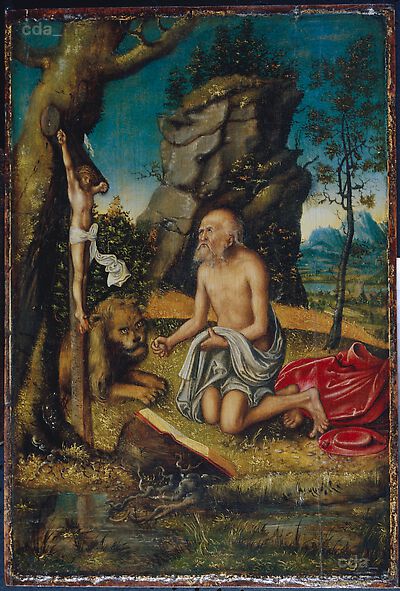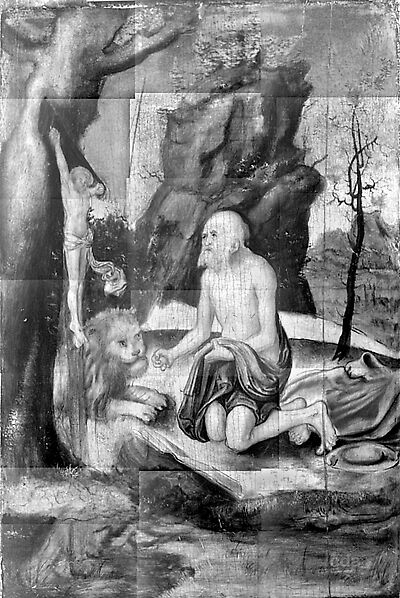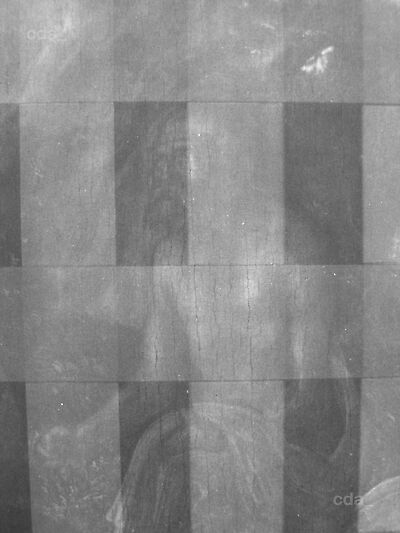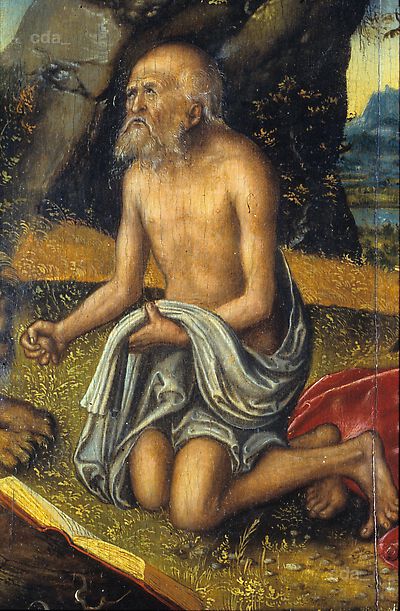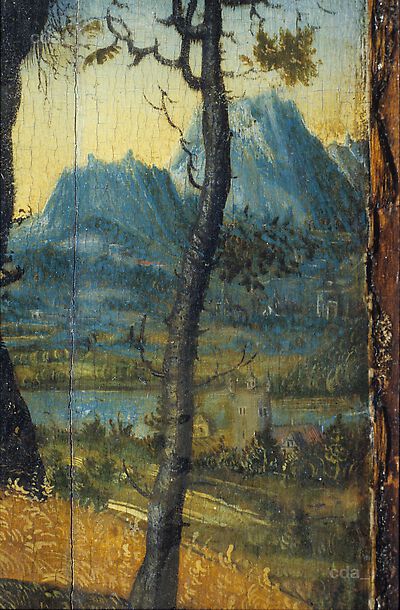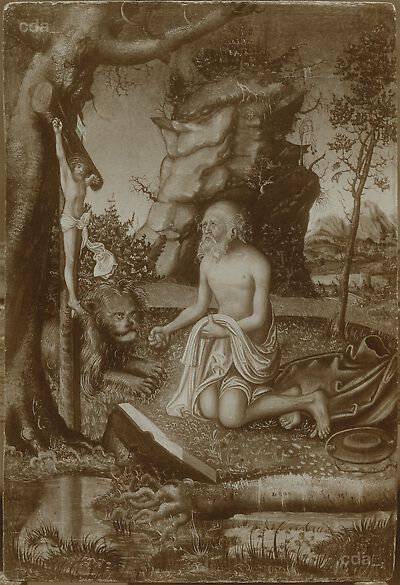Support
The panel consists of a single board (34.7 x 23.5 x 0.4 cm). the wood is soft and therefore probably lime. The direction of the grain suggests a tangential cut. At the top edge there is a small knot in the wood. At a later date the panel was thinned slightly on the reverse and cradled. The dimensions do not appear to have been altered. The reverse of the panel is slightly bevelled along the top and bottom edges and exhibits remains of a black coating.
Ground and Imprimatura
The panel has a white ground, which appears to be a chalk ground. The ground does not extend to the edges of the panel, suggesting that the panel was at this stage fixed in a working frame. In the area between the panel and the original frame there is a barb, its raised profile suggests that the smoothing of the panel was also carried out in a frame. A blade was used for this purpose and its scratch marks are visible in the x-radiograph.
Between the ground and paint layers a light red pigmented layer is visible (imprimatura). Examinatioin under the stereomicroscope showed that it could be an admixture of lead white and vermilion. This layer was applied with a brush. The brushstrokes run mainly in the vertical direction and are visible on the painted surface.
Underdrawing
An economic black underdrawing executed with a brush is visible in the infrared reflectogram (see Sandner 1998, 155). The drawing concentrates on fixing the essential contours as well as some details. It may be assumed that this underdrawing followed an initial sketch employing a no longer visible drawing material (charcoal or chalk). It would probably have been similar to Cranach's known preparatory sketches on paper.
Only a few alterations are visible between the underdrawing and the subsequent painted layers. For example the left under arm of St Jerome is slightly higher in the underdrawing and the contours of the tree trunk at the left edge were shifted slightly to the left during the painting process.
Paint Layers and Gilding
Flesh paint
The flesh paint was initially laid in with an admixture of lead white and vermilion pigments. The shadows were subsequently modulated with semi-transparent brown glazes and highlights were added with a lighter flesh coloured paint. The paint was applied with brushstrokes and dabbed. The x-radiograph exhibits a comparatively weak absorption and suggests an experienced painter. It may be assumed that the artist drew on a detailed pre-existing design.
The physiognomy of St Jerome is masterfully painted. The eyes are confidently executed, considering their size: the tiny eyeballs were executed employing an admixture of whitish blue paint, the caruncle was indicated using red paint, the black pupils were heightened with white dots of reflected light and the eyebrows and the eyelashes were applied to the dark ground with a few light grey hairline strokes. Similarly the small figure of Christ on the cross (head c. 1 cm) was painted with great confidence.
Garments
The red cardinal's vestments and the broad rimmed hat were intially painted employing vermilion and black, subsequently white highlights and black shadows were added. Finally a lush red glaze was applied to the whole area. In contrast the white cloths were essentially modelled wet-in-wet with white and black pigments (possibly some coloured pigments in the folds).
The lion was initially painted in an unmodulated brown layer. Single hairs were then added with a pointed brush employing dark and lighter (lead-tin-yellow ?) admixtures.
Sky and landscape
The sky and the background landscape were intially painted with grey paint (white and black pigments). A tonal gradation between the zenith (grey) and the horizon (white) is discernable. Finally the blue pigment was dabbed on. It appears to be very finely ground azurite. The horizon was brightened with the addition of yellow (lead-tin-yellow?).
The landscapes in the foreground and the middle-ground were initially laid in employing a variety of unmodulated colours. Details were added employing brushes of varying widths in combination with different paint consistencies and modes of application. For example to depict the bark of the tree and the moss the paint was dabbed on with a bristled brush. In the area under the horizontal bar of the cross the texture of wood was acheived with a streaky semi-glazed application that allows the imprimatura to shine through. Employing a pointed brush the grass and foliage were finely textured and expand together with the dabbed on leafage like a net over the ground.
Striking in this painting is the difference in the painterly quality between the modelling of the folds in the white cloths and the red cardinal's vestments. Whereas the lighting is more nuanced in the depiction of St Jerome's white cloth the representation of the folds of his robe are less convincing. Similarly the graphic depiction of grass and foliage is relatively schematic.
Framing
- the original frame has not been preserved.
[unpublished examination report, G. Heydenreich 2008]
